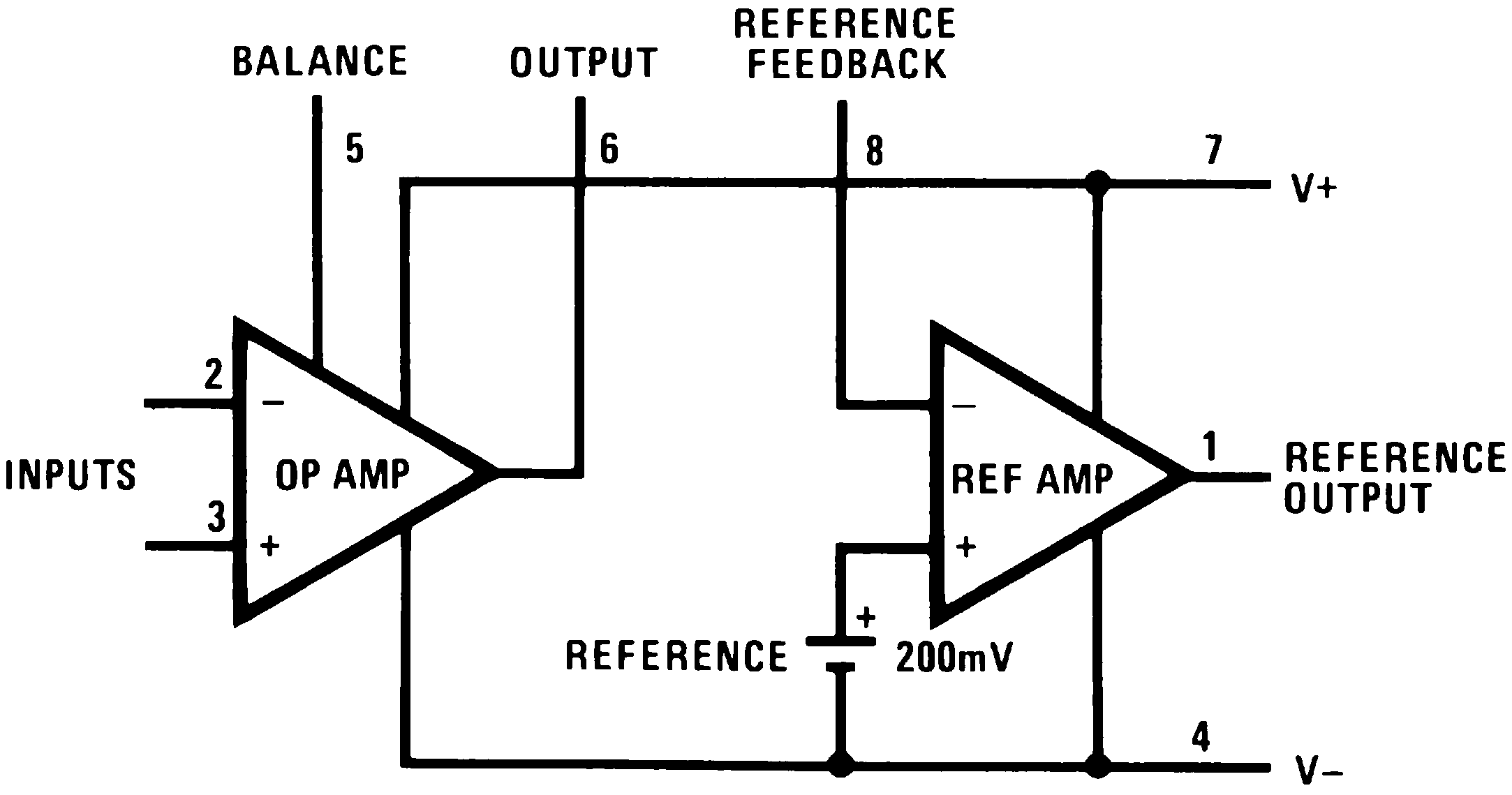SNOSBH4E May 1998 – October 2015 LM10
PRODUCTION DATA.
- 1 Features
- 2 Applications
- 3 Description
- 4 Revision History
- 5 Pin Configuration and Functions
- 6 Specifications
- 7 Detailed Description
- 8 Application and Implementation
- 9 Power Supply Recommendations
- 10Layout
- 11Device and Documentation Support
- 12Mechanical, Packaging, and Orderable Information
7 Detailed Description
7.1 Overview
The LM10 is a dual-operational amplifier combined with a voltage reference capable of a single-supply operation down to 1.1 V. It provides high overall performance, making it ideal for many general-purpose applications. The circuit can also operate in a floating mode, powered by residual voltage, independent of fixed supplies and it is well-protected from temperature drift.
7.2 Functional Block Diagram

7.3 Feature Description
7.3.1 Operating Characteristics
The LM10 is specified for operation from 1.2 V to 40 V. Many of the specifications apply from –55⁰C to 125⁰C. Parameters that can exhibit significant variance with regard to operating voltage or temperature are presented in electrical characteristics tables under Specifications and in the Typical Characteristics section.
7.3.2 Common-Mode Voltage Range
The input common-mode voltage range of the LM10 extends from the negative rail to 0.85 V less than the positive rail.
7.3.3 Operational Amplifier
The minimum operating voltage is reduced to nearly one volt and the current gain is less affected by temperature, resulting in a fairly flat bias current over temperature.
7.3.4 Voltage Reference
Second-order nonlinearities are compensated for which eliminates the bowed characteristics of conventional designs, resulting in better temperature stability.
7.4 Device Functional Modes
7.4.1 Floating Mode
To use the device in a floating mode, the operational amplifier output is shorted to V+ which disables the PNP portion of the output stage. Thus, with a positive input signal, neither halves of the output conducts and the current between the supply terminals is equal to the quiescent supply current. With negative input signals, the NPN portion of the output begins to turn on, reaching the short circuit current for a few hundred microvolts overdrive.
7.4.2 Linear Operation
This device can also operate linearly while in the floating mode. An example of this is shown in the Typical Application section.